| Umělec magazine 2008/2 >> The Second Culture in the USA | List of all editions. | ||||||||||||
|
|||||||||||||
The Second Culture in the USAUmělec magazine 2008/201.02.2008 Ivan Mečl | activism | en cs de es |
|||||||||||||
|
Milan Kohout’s first performances took place in socialist Czechoslovakia at the beginning of the 80s. Much of the documentation of those early events was seized by the Czech secret police, and hence all that exists today are drawings by the author. One example is from the Be a Pig performance, where he went to a pig farm, stripped naked, lay down among suckling piglets, and nursed milk from a sow’s teat. The secret police found the photographs, and, despite the Christian metaphor, the event was labeled “deviant.” The socialist police were utterly uncultured. As a frequently persecuted signatory of the anti-soviet, Charter 77 and an opponent of the socialist government, he fled the country, ultimately landing in the USA in 1986. He did not even stop performing during his temporary stay in an Austrian refugee camp while waiting for his U.S. visa.
In the USA, he eventually determined that there is no regime in the world that does not need to be hit with unrelenting criticism. Oppression—either to a lesser or greater degree—is always a principle of every governance. There will always be plenty of examples of abuse of power and means. And sometimes one must stand up and defend even those who exploit ones own country outside of its territory In the USA, Milan Kohout fired criticism against abuse of power, financial plundering, ignorance of poverty, fabricated war conflicts, and inextinguishable racism. His favorite targets were media lies and advertising campaigns. He is a staunch critic of arrogant American patriotism, notwithstanding his incredible gratitude to the country. He is unsentimental and does not separate art from activism. From the point of view of numerous European art critics, many of his performances are mere political statements. The Eastern European activism of the 80s is nevertheless tolerated as art. The underground of that era and the second culture, to which Milan Kohout belongs, attest to that. Perhaps the reason for that is so the products of these predominantly anarchistic currents could lie in display cases of state institutions and the collections of banks and corporations. In the USA, Milan Kohout became a member of the Mobious Artists Group, which was nominated for the Nobel Prize in 1985. After the Velvet Revolution in 1989, he returned to the Czech Republic a number of times to perform his latest works. For example, he assailed the construction of the Matiční Street wall, which was meant to separate the Roma community and the white communities in Ustí nad Labem, with a performance piece featuring a sawed-in-half Czech flag. In Croatia, he was threatened by nationalists after he changed billboards to mock war “heroes” who were in fact war criminals. One of his most recent pieces, which attracted media attention as well as a series of court hearings, was the sale of nooses. With regard to this piece, we present an excerpt from the interview he granted us in our Prague office. “Milan Kohout Will Now Hand Out the Nooses” I try to simplify things as much as possible, to transfer them to life and give them as much of an ethical charge as possible. One of my favorite performers is Diogenes of Sinope. Twenty-four centuries ago he carried a bag of bones onto the street, tossed them around, and asked people if they could tell the bones of the poor from those of the rich. That is a straightforward performance, charged with ethical content. My emphasis on ethics is given by my active participation in the Czech underground—in the so-called second culture. Ivan Martin Jirous defined the second culture in his essay on the third national revival. He mentions the basic principles. Better to make no art at all than to make an artistic compromise. Do not try to be a part of any artistic history. Do everything genuinely. There, the divide between the mainstream culture and the second culture really did happen. In the political sphere it was Charter 77. The performance with nooses originated for Tremor, a virtual festival. At that time, in November of last year, the mortgage crisis in the United States was in full swing. For years, banks had been earning on their cynical pyramid schemes, selling mortgages to people who could not afford them. The banks were well aware that many would not be able to pay them off. They also knew that by the time the debt-ridden people declared bankruptcy and lost their homes, they would have managed to sell their mortgages on the market. They created the impression that real estate prices would just keep rising. But they can’t climb sky-high, and so the crash of the entire mortgage scheme was inevitable. When that bubble did burst, millions of poor folks started to lose their homes. At the beginning they were told that they would be able to refinance their loans in two years’ time; that the new loans would reportedly reflect the new value of their homes and that the interest would be the same. But that did not happen. In some cases, the interest tripled in just two years. Many of them committed suicide. I wanted to clutch that cynical principle of those banks in as simple a manner as possible. I decided to sell nooses right outside Bank of America’s headquarters in Boston. It was a metaphor for the banking industry’s cynicism. They could simply add a beautifully wrapped noose to go with those loans. And bill for it too. I made tied up perhaps twenty nooses, made a sign saying “NOOSES FOR SALE,” and stood outside the bank. I told the photographer to snap shots every second because I knew it wouldn’t be long before the police arrived. In America, there are cameras everywhere, and when I perform a piece, the police usually show up within a few minutes. I stood there for maybe four minutes. Then they arrived. They told me that I couldn’t sell anything because I didn’t have a vendor’s permit. I covered up the words “FOR SALE” and started shouting “Free nooses!” That drove them insane. They arrested me and confiscated the nooses and sign as evidence. In America, we are quickly approaching the quintessential Big Brother society; within a few seconds, the police can find out everything about you via satellite. Opposite the bank is Boston’s old town hall; the Declaration of Independence was read from its balcony in 1776. The principles of personal freedom and democracy are now conceptually facing the bank building, i.e., the embodiment of democratic freedoms of the United States today. They arrested me under the balcony from which freedom of speech was declared. Milan Kohout After a series of guilty verdicts, appeals, reactions in the press in defense of freedom of speech, the support of the cultural public, and an exchange of judges, Milan Kohout was ultimately acquitted. The case lasted for more than half a year.
01.02.2008
Recommended articles
|
|||||||||||||
|
04.02.2020 10:17
Letošní 50. ročník Art Basel přilákal celkem 93 000 návštěvníků a sběratelů z 80 zemí světa. 290 prémiových galerií představilo umělecká díla od počátku 20. století až po současnost. Hlavní sektor přehlídky, tradičně v prvním patře výstavního prostoru, představil 232 předních galerií z celého světa nabízející umění nejvyšší kvality. Veletrh ukázal vzestupný trend prodeje prostřednictvím galerií jak soukromým sbírkám, tak i institucím. Kromě hlavního veletrhu stály za návštěvu i ty přidružené: Volta, Liste a Photo Basel, k tomu doprovodné programy a výstavy v místních institucích, které kvalitou daleko přesahují hranice města tj. Kunsthalle Basel, Kunstmuseum, Tinguely muzeum nebo Fondation Beyeler.
|







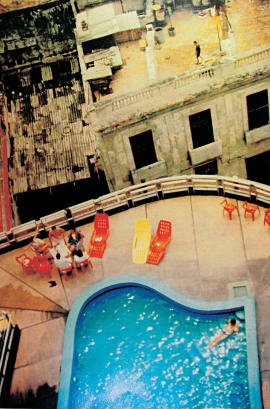





























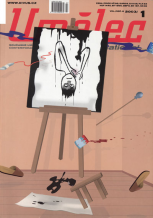
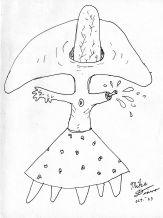
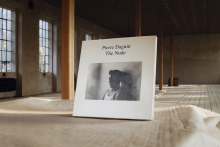
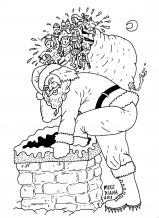


 New book by I.M.Jirous in English at our online bookshop.
New book by I.M.Jirous in English at our online bookshop.
Comments
There are currently no comments.Add new comment